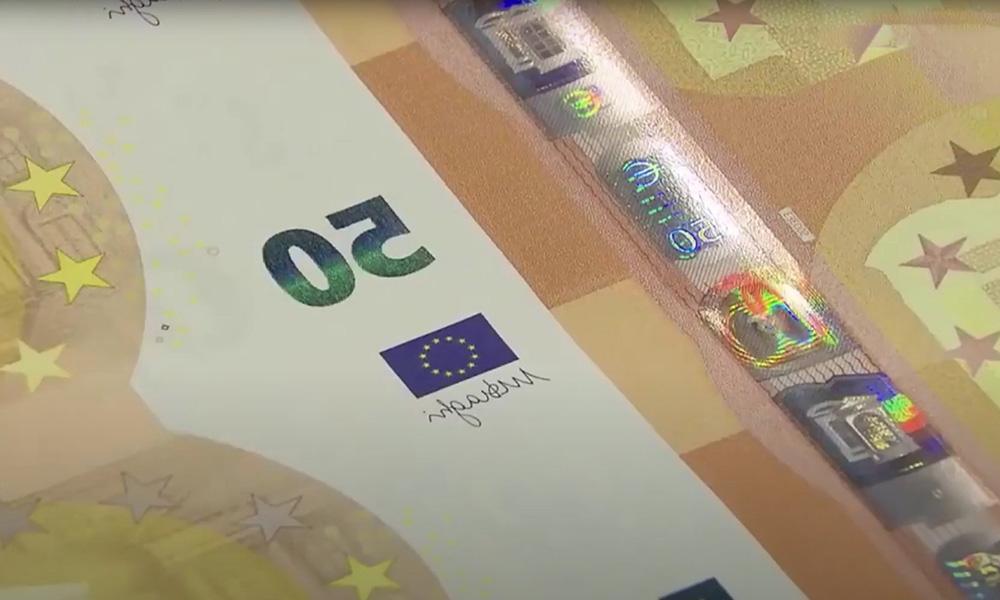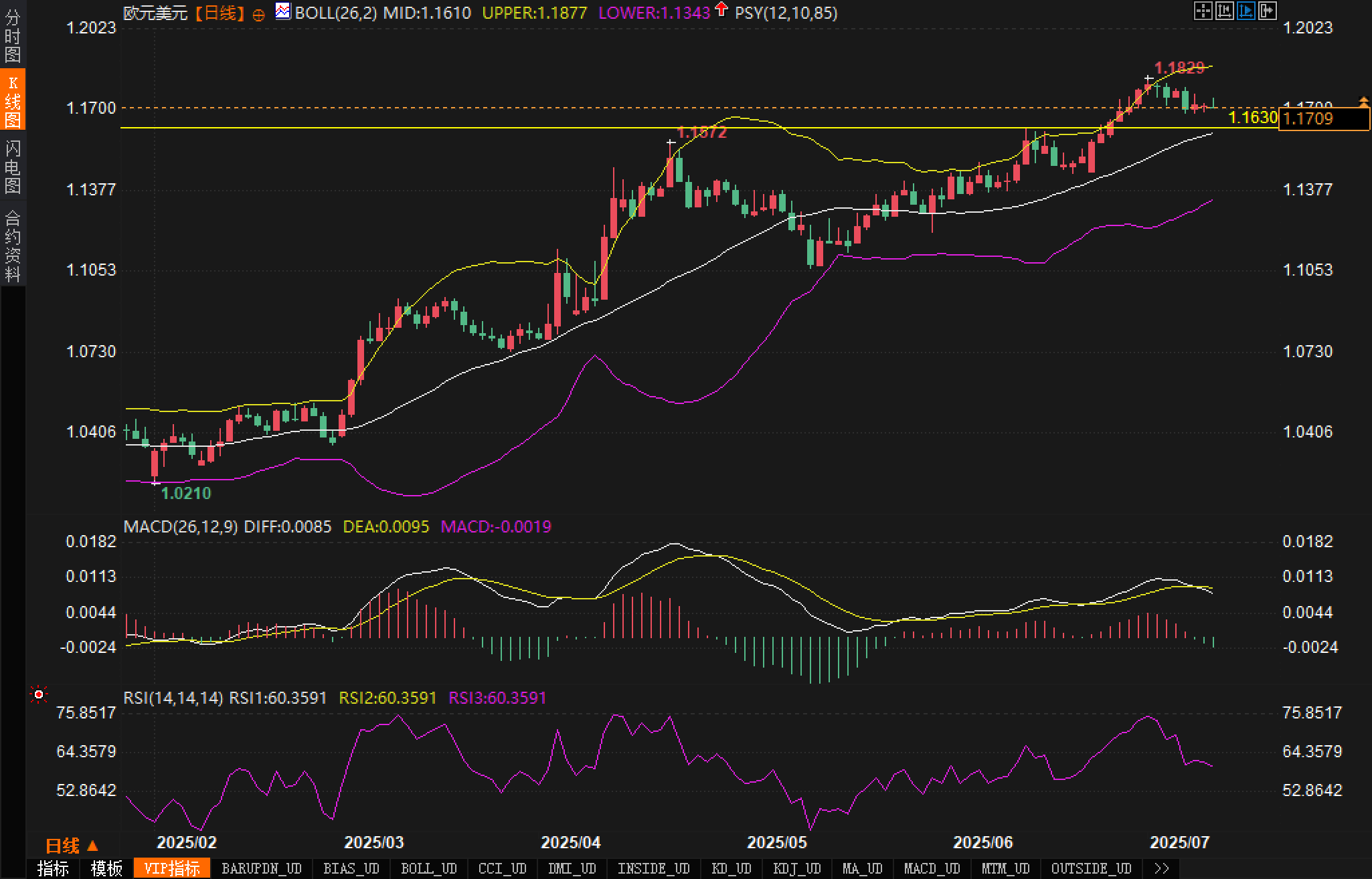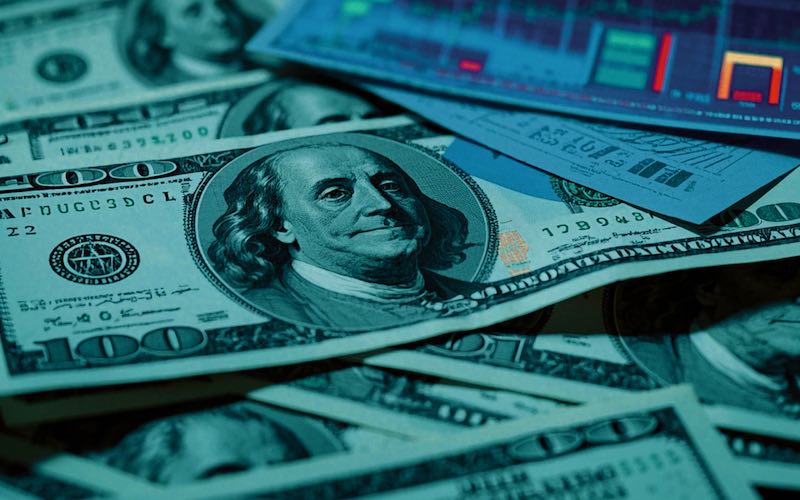Market sentiment turned cold, and the rebound of the US dollar suppressed the strengthening of the euro
2025-07-10 21:00:19

Fundamentals
From a fundamental perspective, in the Eurozone, Germany's June consumer price index (CPI) data remained flat on a monthly basis, with the annual rate falling back to the ECB's 2% target. Weak inflation momentum puts short-term pressure on the euro. According to Reuters, despite positive signals in the EU-US trade negotiations, US President Trump expressed approval of the EU's "constructive attitude" and hinted that an agreement may be reached soon, and European Trade Commissioner Sefcovic also released optimistic remarks, but the market is cautious about the outcome of the negotiations.
In the United States, the minutes of the Federal Reserve meeting showed that most FOMC members tended to cut interest rates in the coming months, believing that the impact of tariffs on inflation was temporary, and expressed concerns about the continued slowdown in the labor market. In addition, strong demand for the US 10-year Treasury auction on Wednesday led to a decline in yields, slowing the rise of the US dollar. Currently, the CME interest rate observation tool shows that the probability of a 25 basis point rate cut in September has jumped from 65% before the release of the minutes to 72%.
Overall, the short-term trend of the euro is affected by multiple factors, market sentiment is wavering, while the US dollar remains oscillating between safe-haven buying and easing expectations.
Technical aspects:
From the daily chart, EUR/USD has formed a stable upward channel since it started the upward trend from the low of 1.0210, and has been standing above the middle track of Bollinger (currently 1.1610). Recently, it once surged to the high point of 1.1829 this year, but then it fluctuated and consolidated at a high level.

The current K-line structure presents a typical consolidation pattern, indicating that the upward momentum is gradually weakening. The 1.1750 area forms obvious resistance, and the MACD indicator shows a dead cross, and the histogram turns green. In the short term, there are obvious signs of bullish momentum exhaustion.
The relative strength index (RSI) fell from the high of 75 to the 60 level. In the short term, the momentum is weak and there is room for further adjustment. Analysts believe that if the exchange rate falls below the support area of 1.1630 and the Bollinger middle track of 1.1610, further support will be seen at the previous high of 1.1572.
Market sentiment observation
From the perspective of market sentiment, the current risk appetite has declined significantly, and the market's positive expectations for trade negotiations have failed to cover up the anxiety caused by the slowdown in global growth and policy uncertainty. Analysts believe that the Fed's release of dovish signals has not triggered significant selling pressure on the US dollar, reflecting that as the interest rate cut cycle approaches, global capital flows are more inclined to US dollar assets.
As for the euro, although the technical trend has been upward for a long time, the fundamentals have not shown any incremental information sufficient to drive continued appreciation. The market is still sensitive to weak inflation and weak growth in Europe, which limits the euro's rebound space. The overall market sentiment is characterized by "high-level fluctuations and wait-and-see attitude", and liquidity is acceptable but lacks a clear direction.
Outlook
Short-term outlook:
Analysts believe that if EUR/USD continues to consolidate above 1.1700, it can be regarded as a normal correction to the previous rally, and the market is expected to challenge the highs of 1.1750 and 1.1829 again. However, if it falls below the above key support, the technical side may turn to a deeper correction, with the target pointing to the 1.1500 area.
Mid- to long-term outlook:
The medium-term trend maintains a bullish structure, and the Bollinger Bands show no signs of closing, indicating that the current correction is a phased correction in the trend. Analysts believe that if the Fed actually starts a rate cut cycle and the trade relationship between the EU and the United States tends to ease, the euro is expected to gradually break away from the current consolidation range and hit the 1.19 or even 1.20 integer mark. However, if European economic growth expectations continue to be sluggish, we need to be wary of the risk of trend reversal.
- Risk Warning and Disclaimer
- The market involves risk, and trading may not be suitable for all investors. This article is for reference only and does not constitute personal investment advice, nor does it take into account certain users’ specific investment objectives, financial situation, or other needs. Any investment decisions made based on this information are at your own risk.










